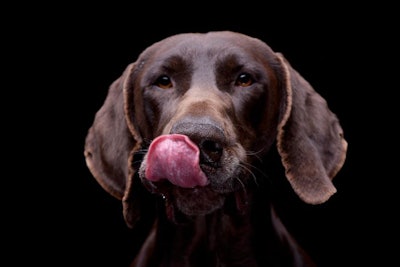
Flavor and palatability are key components of a pet food formulation. After all, if the intended end consumer (a cat or dog) won’t eat it, all the nutrition and functionality packed within it won’t matter a bit.
Most pet food professionals know enough about pet food flavor to help them understand its importance; for formulators, R&D experts or others tasked with developing a pet food product, they know and understand even more about the science and art of palatability.
Yet learning additional information about how cats and dogs taste—and smell, since those two senses and functions work so closely together—can only help. And it can be downright fascinating, too. At least when the information comes from Nancy Rawson, Ph.D., acting director and president of Monell Center, which bills itself as the “world’s only independent, non-profit scientific institute dedicated to interdisciplinary basic research on the senses of taste and smell.”
Rawson presented as part of the American Feed Industry Association’s 2023 Pet Food Conference on January 24, 2023, during the International Production & Processing Expo in Atlanta, Georgia, USA.
Did you know …?
“Each animal lives in its own sensory world.” Rawson attributed this statement to Monell’s founding 50 years ago. So each animal’s (and person’s) senses are somewhat unique. At the same time, flavor is multisensory; not only does smell play a role, but so do color and touch. In terms of touch, think of mouthfeel and texture, and how important they are to a pet’s acceptance of a food (particularly with cats).
Sensory research, especially into genetics, has unearthed other foundational concepts about taste and smell, as well as just some plain fun and interesting facts:
- Though cats and dogs don’t see as many colors as humans do, it was recently discovered that cats can see in the ultraviolet spectrum, Rawson said. “Weird, but cats are weird,” she commented. (She’s a cat owner, by the way.)
- When dogs smell, it doesn't just activate their olfactory cortex, as in most animals, but also their visual cortex.
- Taste buds are functional at birth, probably even before.
- A taste pore is only the width of a human hair, yet everything must pass through it for the substance to be tasted.
- Humans each have about 9,000 taste buds; dogs have about 2,000 and cats, about 1,000. The number is partially determined by the size of the tongue.
- When it comes to smell—determined by the number of olfactory cells—dogs far outrank cats and humans: The canine olfactory epithelium holds 30 to 50 million receptor cells, two to five times the number humans have.
- Yet, the animals with the most odor receptors are elephants, pigs and bears. Dogs rank fourth, just ahead of rodents.
- These cells are replaced throughout an animal’s life, just as taste cells are.
- Despite their large number of odor receptors, dogs’ sense of smell isn’t necessarily more sensitive than that of people; rather, dogs’ anatomy (including the olfactory system) allow them to collect more odors to detect small changes in them.
- For both taste and odor, “receptiveness” depends on the animal’s genetics, experience and health. And, like those, the receptiveness can shift during the animal’s lifetime.
- In terms of genetics, it was determined in the 1970s that cats can’t taste sweet, Rawson said; they’re missing a taste receptor for tasting sugars. However, certain sugar chemicals activate bitter receptors in cats, so using something like saccharine in pet products, especially ones for cats, is not a good idea. (She spoke from personal experience with this, apparently.)
- Similarly, dogs have fewer bitter receptors than do humans, who have about 12. Cats are in between. Rawson pointed out that denatonium, a very bitter substance, has long been added to antifreeze to deter dogs and cats from ingesting it; yet most dogs don’t mind the taste because of their low number of bitter receptors, so that substance is very unlikely to be a deterrent.
- In terms of health, metabolic status is an example of a health parameter that affects taste very directly. Thus, pets that are obese and/or diabetic may experience a direct effect of the involved hormones on what they taste.
- Other health situations that can affect taste include aging: It reduces the ability of taste and odor-sensing cells to be replaced, so older animals are less sensitive to odors; and new research has indicated this reduced sensitivity in turn leads to cognitive decline.
- Stress, which can directly affect certain taste receptors (such as one in both sweet tastes for dogs and umami tastes for all), can also reduce the number of mature taste cells.
Of course, a recent, well-known example of health affecting taste and smell occurred in many people infected with SARS-CoV-2, the virus causing COVID-19. Rawson said about 10% of people with that symptom never retained their sense of smell, but a process known as olfactory training may help them start to get it back. This provides lessons about pets in terms of introducing them to multiple smells and tastes, especially when they’re young, she added.

















